Not long ago, the software-as-a-service (SaaS) model was an esoteric concept that only the most cutting-edge technology companies were exploring. Nevertheless, as more organizations trade in the digital economy and increasingly migrate their data and IT infrastructures to the cloud, SaaS has become one of the most important keys to success in digital marketing.
But SaaS marketing doesn’t come easy. From selling an intangible product to keeping up with regular software updates, there are many challenges marketers have to overcome when marketing their platforms to prospective customers.
That doesn’t mean that advertising for a SaaS company is impossible, though. Nailing a B2B SaaS marketing campaign can help your SaaS business stay ahead of the competition and ensure success in a crowded digital economy.
Ready to learn all about SaaS marketing? Keep reading to discover the best practices for selling software and how to transform your marketing campaigns for SaaS success.

Marketing Your SaaS Brand: What You Need to Know
Let’s start with this: What is SaaS marketing? It’s a form of marketing that focuses on generating sales leads specifically for cloud-based software solutions. But, to understand SaaS marketing, it’s probably best to know first what SaaS actually is. At its most basic definition, SaaS (Software as a Service) is a software licensing and delivery model in which people pay a flat, monthly rate and receive subscription-based and centrally-hosted software. That means SaaS marketing is how these brands advertise their technology services to potential customers.
SaaS platforms are advantageous because they enable businesses to leverage advanced software without having to undergo costly installation and maintenance, outsourcing those responsibilities to the SaaS provider. Often, SaaS businesses are an interesting and affordable option for companies since they let them gain advanced and updated technology usage without having to fully understand how to manage the systems behind the scenes.
The advantages of SaaS are pretty straightforward, but marketing them is another story.
The Difference Between SaaS Marketing and Conventional Marketing
There are a few key differences to note when it comes to traditional marketing vs. advertising for a SaaS company. One is the length of the sales cycle. The SaaS sales cycle places extra emphasis on customer retention, putting it on the same level of importance as customer acquisition — if not higher. This is because a large percentage of their profits come from existing customers, and they will have already spent a substantial amount of money and time winning them over in the first place. When a SaaS company sells to a client, it wants them to partner with the brand for life, with their usage scaling and changing as the technology updates.
More than that, the entire SaaS model is centered around subscription licenses, meaning customers pay on a rolling basis to continue using the product. People could easily back out of monthly payments, which makes continuous marketing to current customers extremely important.
All of that means marketers have to craft their strategies in a way that focuses on strengthening existing relationships by continuously providing valuable information, relevant service, product upgrades and loyalty rewards that demonstrate the importance of the customer relationship to their business.
If that wasn’t enough, SaaS marketers have a number of other challenges they have to face to find success, which collectively makes SaaS marketing different from conventional marketing. Some of the main ones include:
- It’s an intangible product: One of the great challenges when it comes to SaaS marketing is selling a product that customers can’t physically see or touch. That makes it a lot harder for them to understand how to deploy it and how it helps them. Your marketing campaign will need to navigate these challenges and ensure all customers are crystal clear about what it is they’re interacting with and exactly how that product will make their lives easier and more streamlined.
- Platforms are constantly changing: SaaS platforms are constantly undergoing upgrades, bug fixes and maintenance, meaning features can subtly change over time. That can be a challenge for marketing teams because their messaging could become outdated fast if they’re not keeping up with the latest changes. Marketing teams will need to be in constant communication with developers to ensure their materials accurately reflect the product as it stands, and make regular changes to the copy so that potential customers are always being drawn to the latest and greatest content pieces.
- There’s usually a tiered pricing structure: The beauty of the SaaS delivery model is that you can charge different prices for different features by creating pricing tiers, helping you attract more business. However, that can be a challenge for marketers because it means you need to develop multiple distinct personas and market different tiers to each one separately. This requires more time and energy spent creating a marketing strategy, but crafting persona-specific messaging is critical to SaaS marketing success. Some companies even develop SaaS lifetime deals to reach a higher percentage of their potential audience.
- There’s a lot of competition: Because we live in an ever-digitizing world, new technology solutions are constantly popping up, making it difficult to establish a SaaS brand in the market. To build credibility, it’s important for marketers to ensure that advertising materials are easy to read and understand, all while sounding knowledgeable and able to help solve potential customers’ pain points.
- It can be hard to differentiate a SaaS product from other brands: Competition is fierce in the SaaS industry, and it can be difficult to set certain brands apart from others. Generally, a given software company will offer an extremely similar product to several other companies, making it difficult to get people’s eyes on that brand’s services rather than the other available options. To solve this problem, marketers can use compelling selling points, customer testimonials and case studies to help elevate the specific SaaS brand.
Subscribe to
The Content Marketer
Get weekly insights, advice and opinions about all things digital marketing.
Thank you for subscribing to The Content Marketer!
Best Practices for Your SaaS Marketing Campaign
Although there are several factors fighting against marketers when it comes to increasing SaaS sales, there are ways to maneuver around these roadblocks and find effective solutions. To get the most out of your SaaS advertising efforts and create an effective SaaS marketing strategy, use these tips:
1. Use Freemiums
One of the most effective ways to overcome all the SaaS marketing challenges listed above is to offer a free trial for new users. Better yet, your organization can include a free tier in your subscription model that gives users access to a few of the basic features of your platform to give them a taste of a full partnership with your SaaS company.
Because SaaS development services are often difficult to visualize, freemium models give users a deeper understanding of how your software works and what specific business problems it can solve for them. It also helps you build trust between your brand and your existing customers, which will eventually make them feel more comfortable about upgrading to higher (meaning paid) tiers. Essentially, by giving people a small taste of the benefits your software delivers, they’ll be more likely to choose a longer-lasting partnership with you — a win-win for everyone involved.
2. Target Keywords for Good SEO Performance
SaaS customers don’t just want products — they want information. In the pre-digital marketing days, product/service quality was all that really mattered when it came to winning new customers. That’s not the case anymore.
We live in an attention economy, so standing out is about more than just producing great content — you have to answer the specific questions your customers are asking to stand out in a hypercompetitive field of SaaS content marketing producers.
When designing a content marketing strategy, select keywords that your target audience is searching for and craft your content strategies around those. This helps ensure you’re getting your SaaS product in front of customers where it counts — and getting those crucial moments of attention. Plus, even if your target audience isn’t prepared to purchase your product when they initially start their search, by being a thought leader and offering them vital details on what they’re curious about, they will be more likely to think of your company when they are ready to press the “add to cart” button and make a decision.
3. Utilize Video
People are visual learners, and that’s especially true when it comes to understanding SaaS products. Nothing is more frustrating for SaaS customers than when marketers try to target them using confusing, garbled, jargon-laden language that does little to get them a good look and feel of the product and its related offerings.
That’s where video comes in. Create product demo videos that clearly demonstrate the main features of your software and how users interact with it, emphasizing its ease of use to entice them to learn more. This type of content is very useful because it can live on various platforms — from social media channels and email to your website and internal displays.
Video is an important tool in the SaaS marketer’s toolkit because it enables customers to properly visualize the product in action in a way other marketing forms have a hard time doing. Think of video content as a sales demo for your product. You can walk the viewer through the various tools that your service offers, highlight the features that help solve specific pain points and give people an up-close look at how easily your software can integrate into their daily lives — all with a quick video.
4. Develop a Content Marketing Strategy
Some SaaS companies think pushing their products as much as possible is the best way to get people to buy. Seems straightforward. After all, marketing is really about convincing people to buy your product, right?
It turns out, your potential customer doesn’t want to be bombarded with round-the-clock marketing materials. Your SaaS marketing team has to walk a fine line, staying in front of your potential customer base while not seeming too eager.
That’s where content marketing comes in. Your SaaS marketing team should invest the necessary time and money into developing a content marketing strategy that provides SaaS customers with valuable information about their industry to build trust and enhance brand recognition. At the end of the day, a good content marketing strategy keeps you at the top of your customers’ minds so they think of you when it’s time to buy.
A good content marketing strategy should include:
- Case studies.
- White papers.
- eBooks.
- Blog posts.
- Videos.
- Animations.
- Infographics.
5. Get Into Review Sites
You’ve most likely read a third-party blog post or landing page that included a list of top sites or products to use to accomplish a particular goal. Well, the same kind of content is created for SaaS brands, and it’s an effective way to increase your SaaS marketing performance with social proof and word-of-mouth promotion.
When someone is looking to make a purchase to solve a particular business problem, they will most likely do a bit (or quite a lot) of research before pulling the trigger. One place that is often frequented by curious customers is dedicated review blogs. So, build faith in your brand and highlight your authority on the subject matter by getting your organization’s name on trusted blogs.
Some of the most popular SaaS review sites include:
Recently, G2, Capterra, and other review sites partnered with some interactive demo software providers like Tourial & Walnut. That enables users to add an interactive product demo without coding to their review site listing. With G2, for example, if you have at least their ‘Essentials’ plan, you can add the demo for free. Buyers want to self-explore as much as possible without speaking to a sales team, and an interactive tour is the perfect way to allow that.
Mistakes to Avoid
The biggest no-nos when it comes to SaaS marketing all come down to failing to utilize the most advanced marketing technologies and best practices at your disposal. SaaS customers today are savvier than ever, and they expect you to be too. Don’t rely on outdated forms of digital marketing to sell a highly advanced product.
Here are some things to avoid when crafting your B2B SaaS marketing campaigns:
- Skipping social media: You have to market where the members of your target audience are spending their time. And, whether you like it or not, people spend a lot of time on various social media platforms. Don’t miss the opportunity to reach them by refusing to incorporate social media marketing into your SaaS campaigns.
- Neglecting the user experience: Even if your service will make people’s lives easier, your target audience must have a good experience with your brand for them to actually choose it. Don’t forget about the people you’re trying to reach.
- Targeting too big of an audience: There are a lot of businesses and individuals who need some sort of marketing automation technology to help streamline their company operations, but that doesn’t mean that you can target every one of them. Keep your focus small and aim to meet the needs of a more specific audience.
- Offering only paid service tiers: It’s good to give your customers options on pricing, but it’s vital that you offer a free version of your product. It may seem like a waste to give away your services, but more often than not, customers come to love the free services they use and end up making a purchase for a higher tier.
- Crafting unclear messaging: SaaS products can be a little over people’s heads. That means marketers must write copy that explains how the product works, what benefits it offers people and how it interacts with existing systems. This is easier said than done. Use language that lays out the specifics without resorting to jargon-filled content that can confuse readers.
Measuring Success: What Metrics To Focus On
Where to start when measuring your marketing efforts? It all comes down to figuring out your goals and going from there. Maybe you just want to boost traffic to your site to increase brand recognition. Or perhaps you’re trying to establish your brand as a thought leader in your space.
Whatever your specific goals, the ultimate purpose of a dynamic SaaS marketing strategy should be to generate sales leads and point potential customers to your product. Here are a few of the KPIs you should be tracking to measure your marketing efforts:
- Customer Acquisition Cost: CAC is the amount of marketing dollars you have to spend to push people down the sales funnel and acquire a new customer. Measuring CAC helps you determine how effective (and efficient) your SaaS marketing campaigns are, and gives you insight into how you can improve them.
- Marketing Qualified Leads (MQL): The ultimate point of a marketing campaign is to drive qualified leads to your sales teams. MQL tracks engagement with your content, website and other assets to flag individuals as qualified leads. This helps you gauge your campaigns’ effectiveness and also pinpoint individuals who are more likely to convert.
- Conversion Rate: Good campaigns get consumers to do something after they’ve consumed your content — usually pointing them to another asset, a form, a product demo or another call to action. Conversion rates measure what percentage of content consumers are actually clicking through those CTAs and turning into sales leads.
- Referral Traffic: Track referral traffic to understand which links are driving traffic to your website. This B2B marketing metric is important because it helps you understand which external sources or aspects of your strategy are most successfully driving the results you’re looking for. That can help you hone your referral marketing campaigns by targeting users on the sites where you’re getting the most referral traffic.
7 Examples of Effective SaaS Marketing
1. HubSpot
HubSpot is the gold standard when it comes to online content marketing. Chances are, if you’ve Googled anything marketing or sales related at any time in the past five or so years, you’ve come across HubSpot, usually right there on the first page of search results.
From blog post writing guides to pointers around devising crafty Instagram hashtags, all of HubSpot’s content eventually points consumers to its CRM platform. By establishing itself as a highly trusted authority in the space, the company makes users feel significantly more confident in HubSpot’s software product offerings.
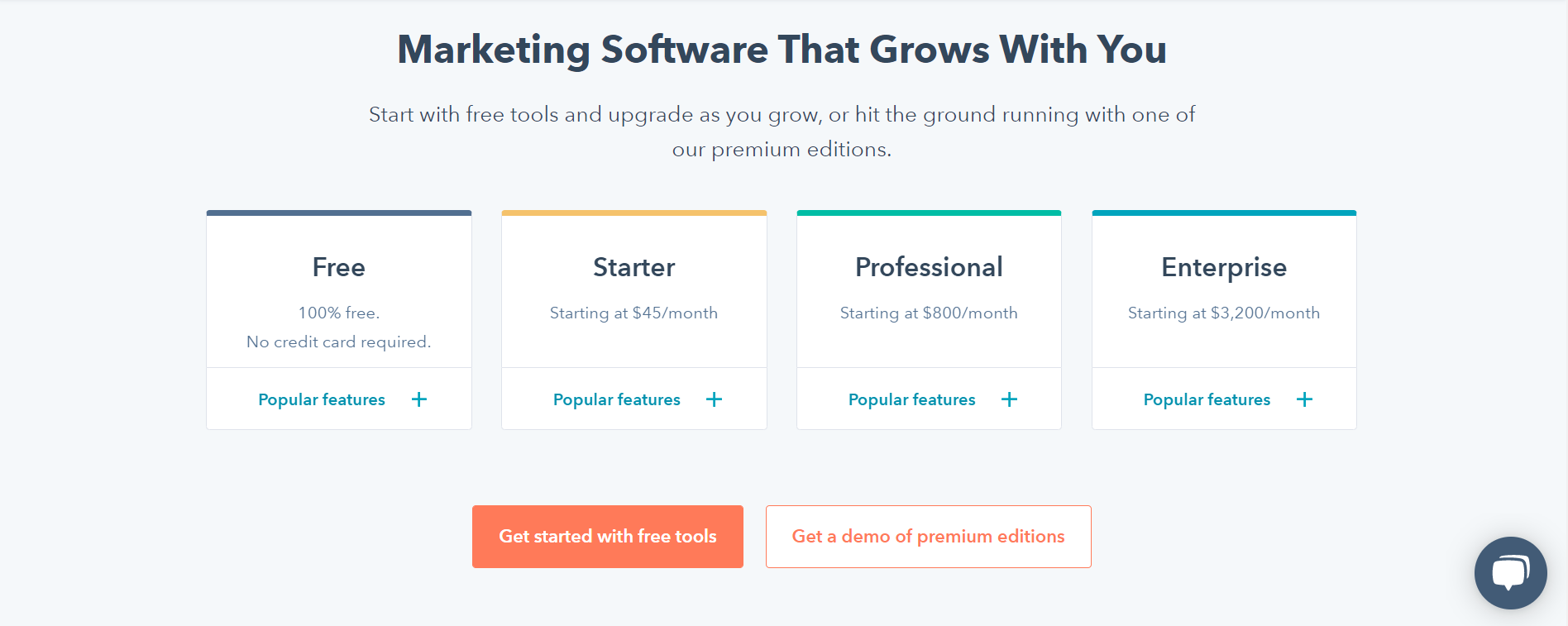
2. Spotify
Spotify has been a pioneer in music streaming services since its foundation in 2006. And it’s not hard to see why. Spotify rolled out a series of curated daily, weekly and annual music playlists based on users’ listening habits as well as those of other people indulging in the same artists and genres for a highly personalized listening experience.
Many of Spotify’s marketing materials — including its tagline, “Music for everyone” — emphasize the centrality of the customer in its business model. Not many SaaS companies have had the success of truly making the customer feel like a valued part of their business like Spotify has.
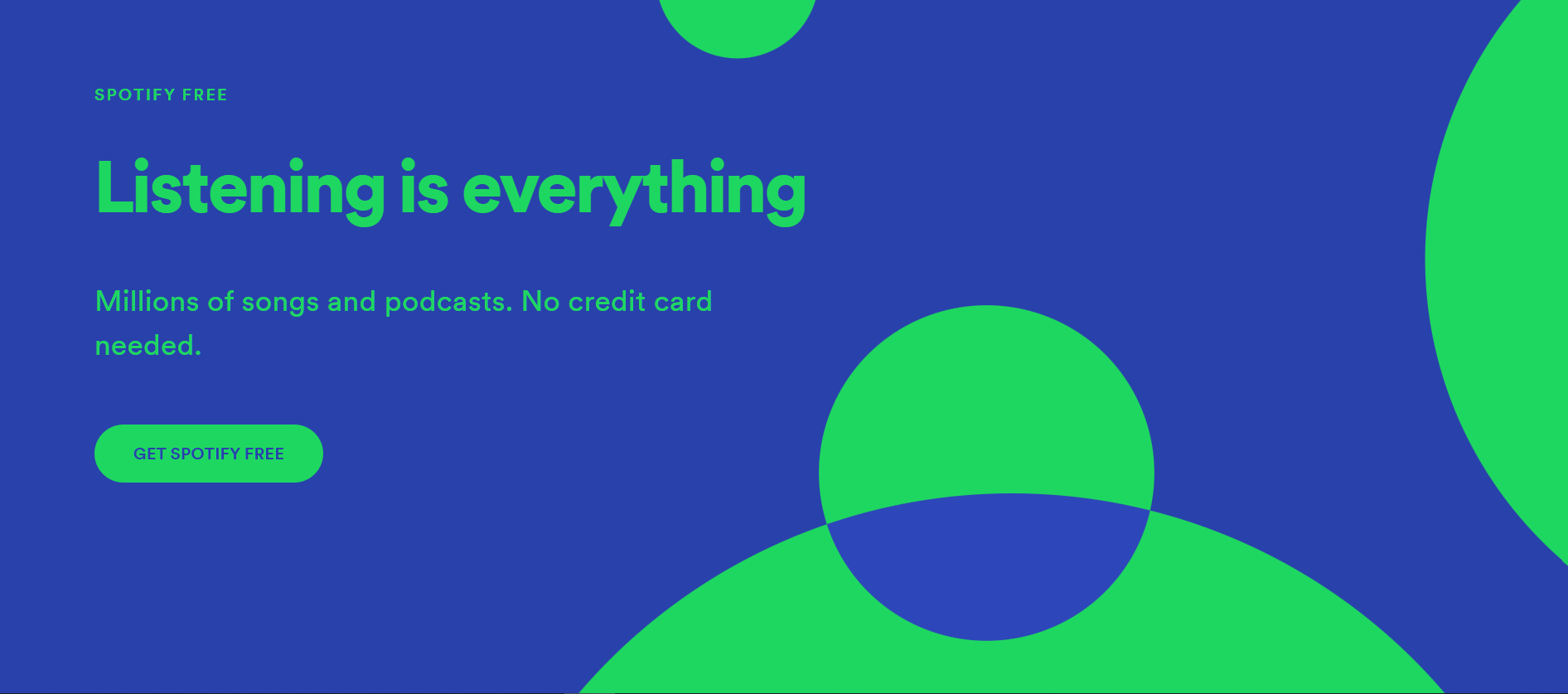
3. Slack
When work went remote in 2020, Slack was ready. Slack had already been bringing work communities together online since 2013, providing a communication platform that made sending messages, links, documents and attachments quick and easy.
Slack uses a tiered subscription model to sell its platform. But where Slack really made its money was through its freemium offering. Anyone can use Slack’s basic-level features for free, but as companies have come to realize the importance of online communication tools — mostly by actually using them (hint, hint) — many of Slack’s users have decided to upgrade to the paid tiers for more advanced services.
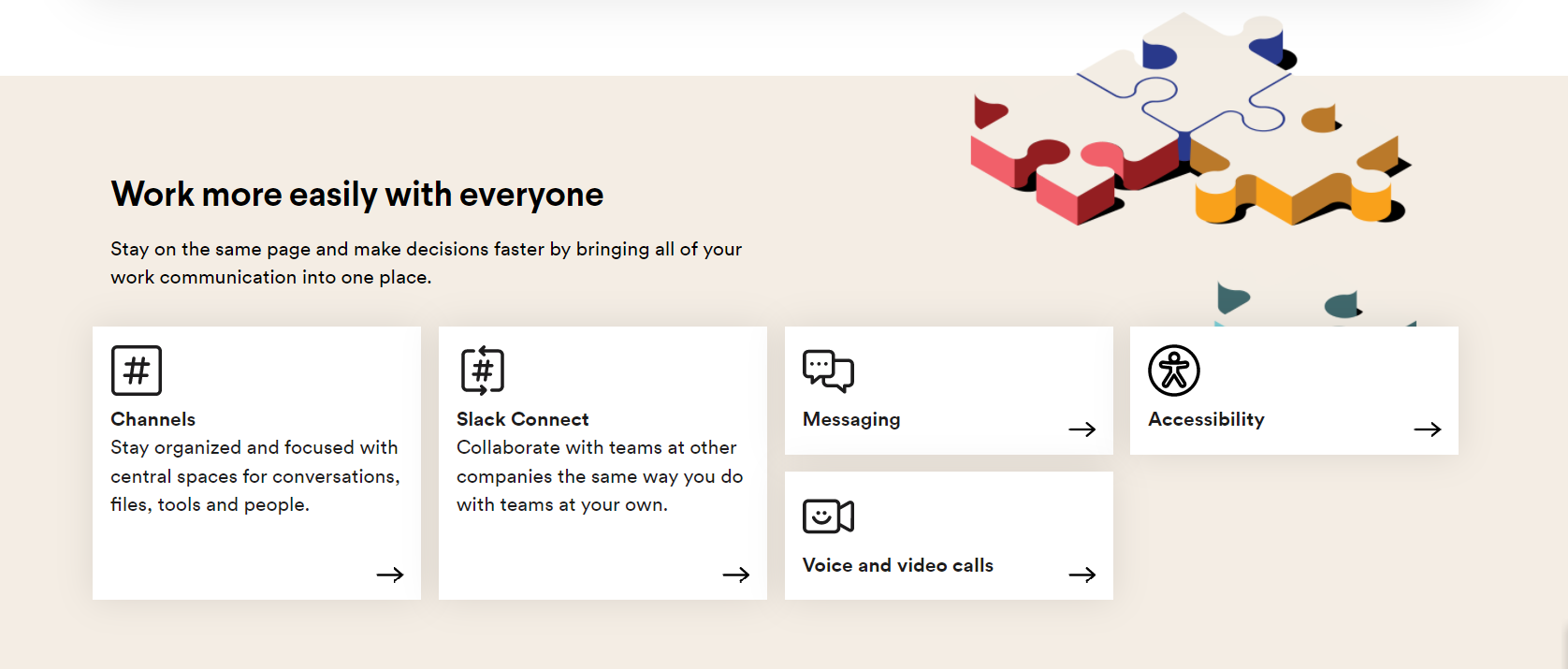
4. ServiceNow
ServiceNow is one of the top SaaS companies in the world. Offering an enterprise platform that optimizes internal workflows and customer management, a big part of ServiceNow’s success is its ability to translate complicated techspeak into simple, understandable messaging points.
The spirit of its tagline, “The smarter way to workflow,” is evident throughout its website, content and other assets, making it easy as can be for customers to know exactly what they’re getting when they adopt the ServiceNow platform.
Simplicity is key when it comes to SaaS marketing success, and that’s what ServiceNow’s marketing campaigns are built on.
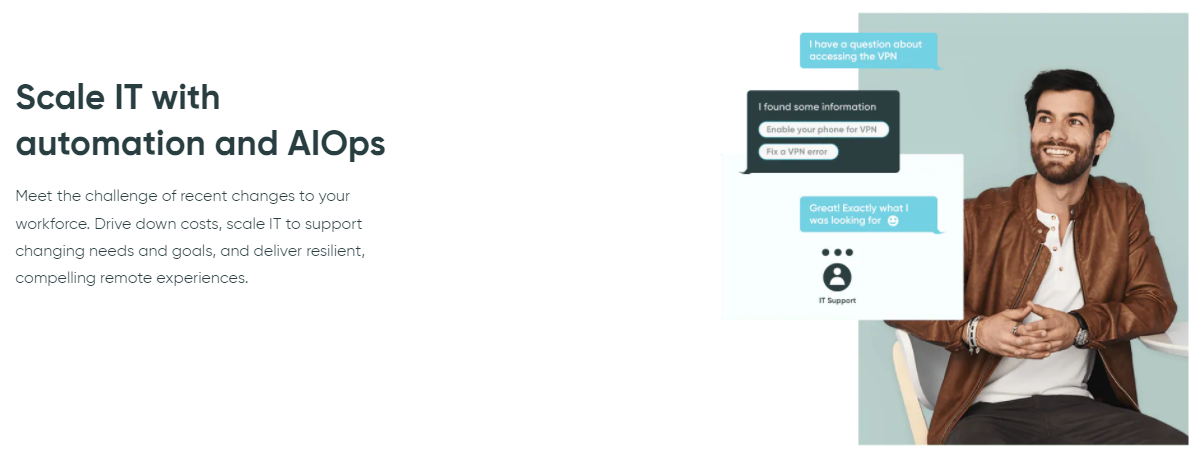
5. Linktree
Linktree is a tool that allows people to share multiple links on various social media platforms, especially Instagram. This is a solution to a specific pain point stemming from the inability to share web links apart from in Stories and the bio section of users’ accounts. With Linktree, social gurus can share one Linktree URL that brings viewers to a page that lists out several link options, making it easier to navigate the various site options available.
This SaaS product allows a user to personalize their page to match their brand, and is an affordable way for people to engage with their audiences. There is a free account option that gives people a good amount of features, including the ability to embed as many links as they want, collect payment from followers, customize their unique landing page to meet their needs and track analytics and data regarding how many views and clicks each Linktree page receives.
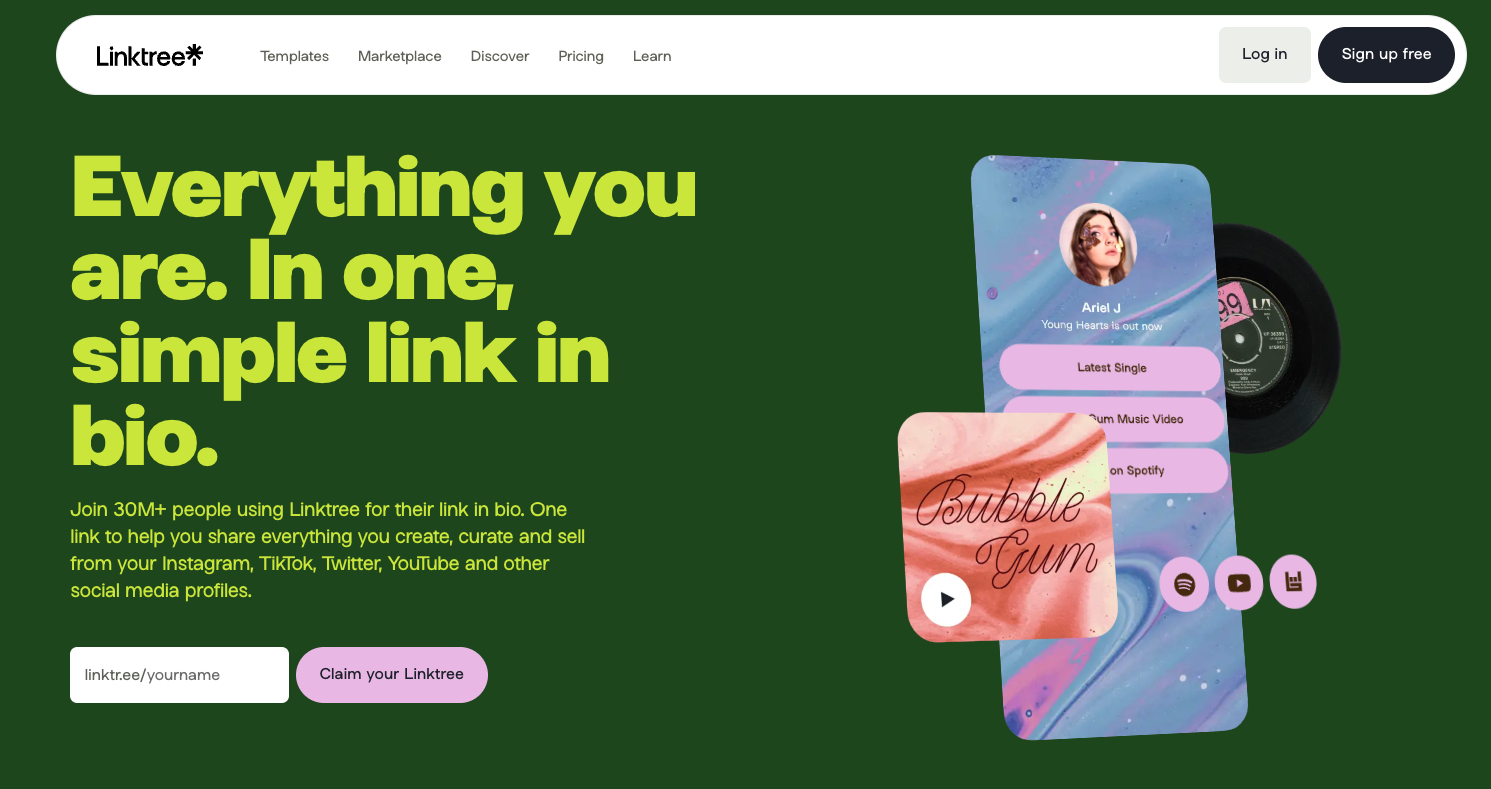
6. Copy.ai
Copy.ai has grown in popularity since its founding in 2020, and it’s now one of the most-used marketing SaaS startups. It’s an AI-based tool that comes up with sentences, texts and slogans, all with the click of a button. Companies can use it as either a means to create content or a jumping-off point for copy ideation.
This SaaS company offers users tools and templates that can help any business create top-notch messaging — and it works. In fact, over 380,000 people have used this software to create marketing content. People can get started with this system for free, or they have the option to test out the pro version for seven days for no charge, an enticing offer for anyone looking to create content more efficiently.
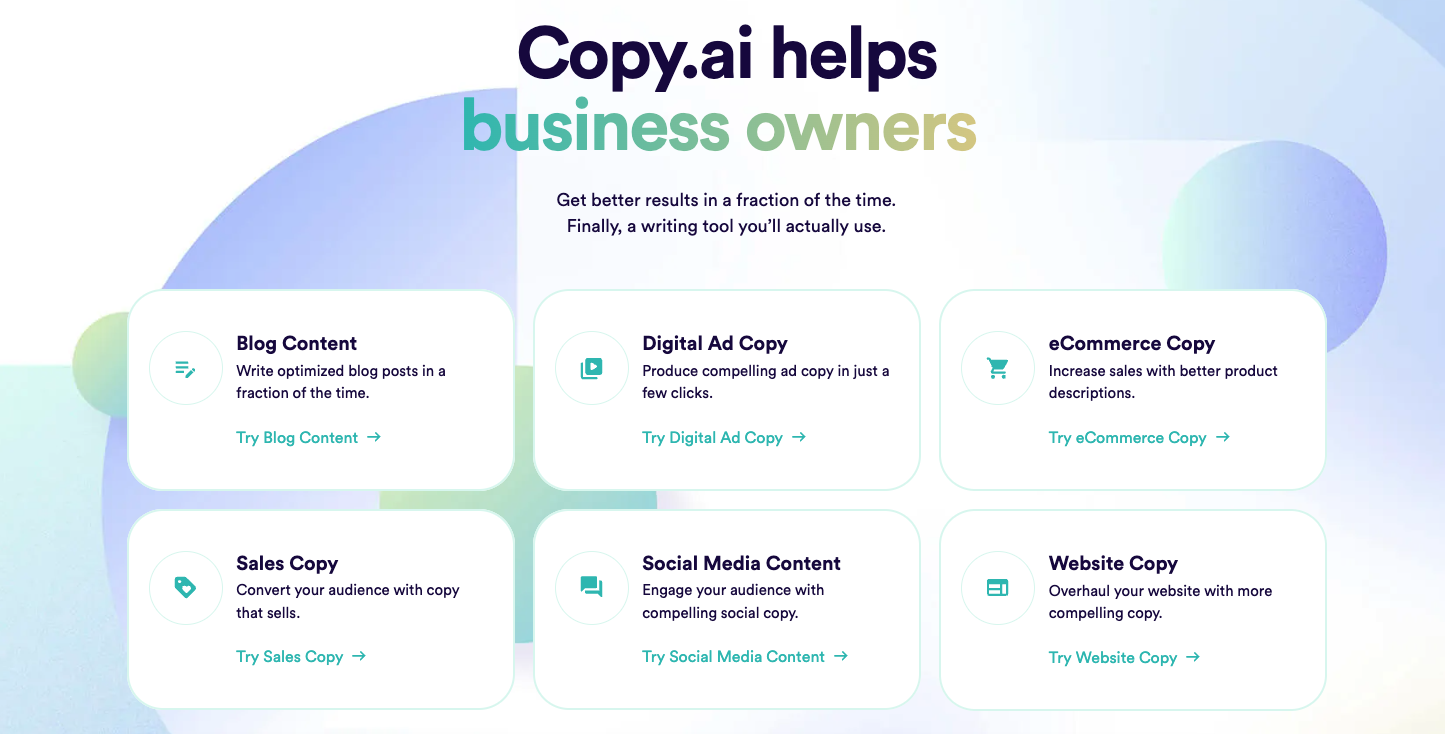
7. SurveyMonkey
SurveyMonkey is an online survey development system that helps people and organizations collect, analyze and represent data. Users can easily create and send email marketing surveys to potential respondents or post them on their websites and social media profiles to gain the highest number of responses. This method of information gathering makes it easier to collect feedback, opinions, criticism and suggestions from the general public and customers.
SurveyMonkey gives people a few different options: Individual, Team and Enterprise plans. There’s also a free trial available for those looking to test out the product before making a decision on the tier level.
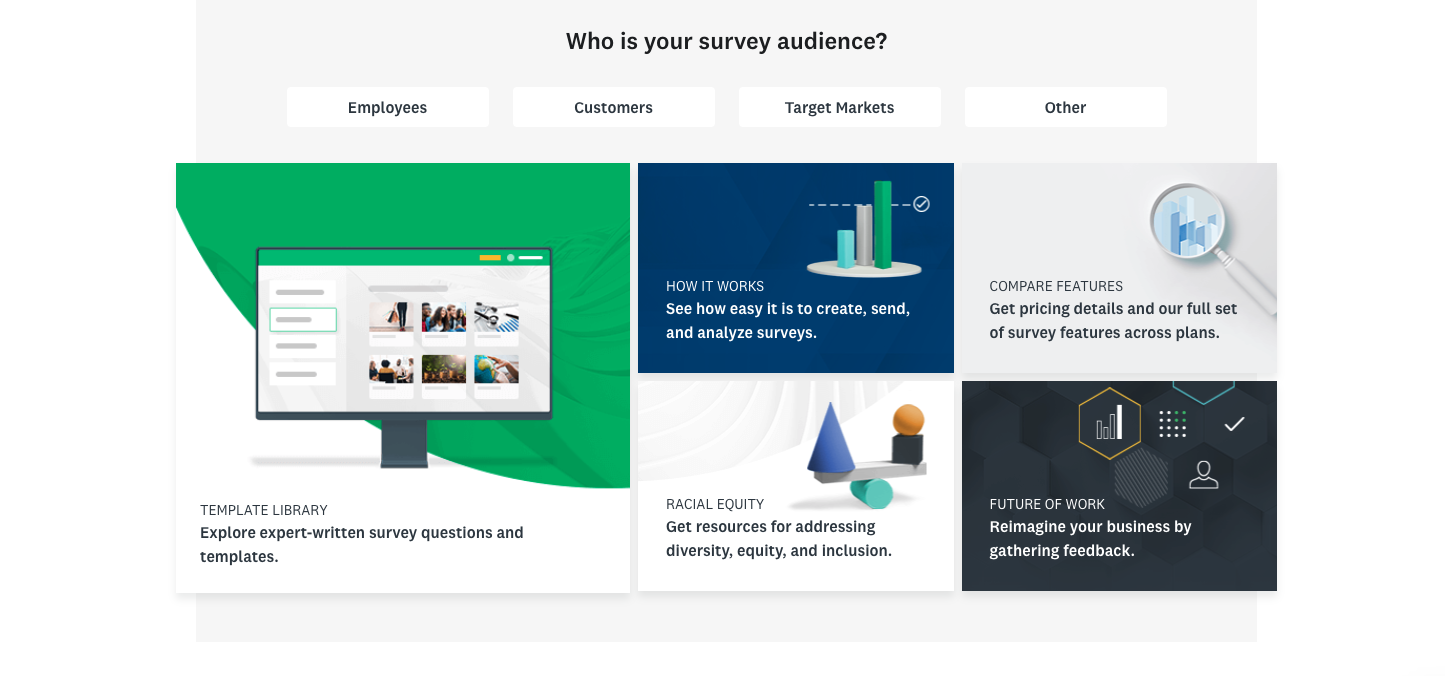
SaaS is the future for many companies in the digital space, so marketers need to keep their fingers on the pulse of new innovations by adopting SaaS marketing best practices to fine-tune their campaigns and stay ahead of the competition.
Subscribe to our newsletter for more SaaS content marketing news, tips and insights from our team of content marketing experts.
Editor’s Note: Updated March 2023.





